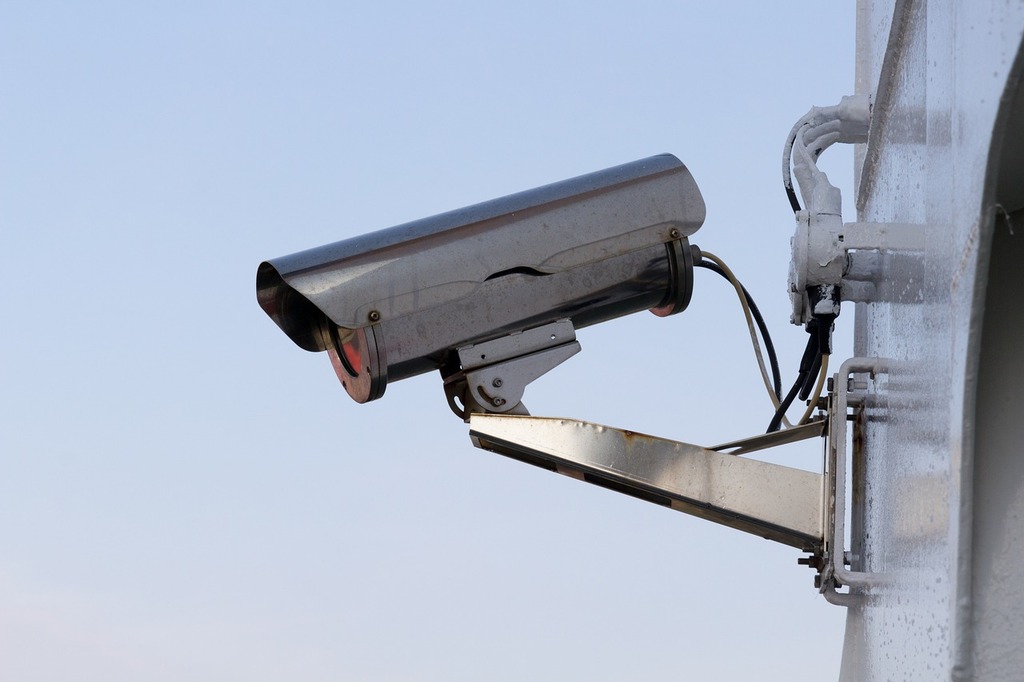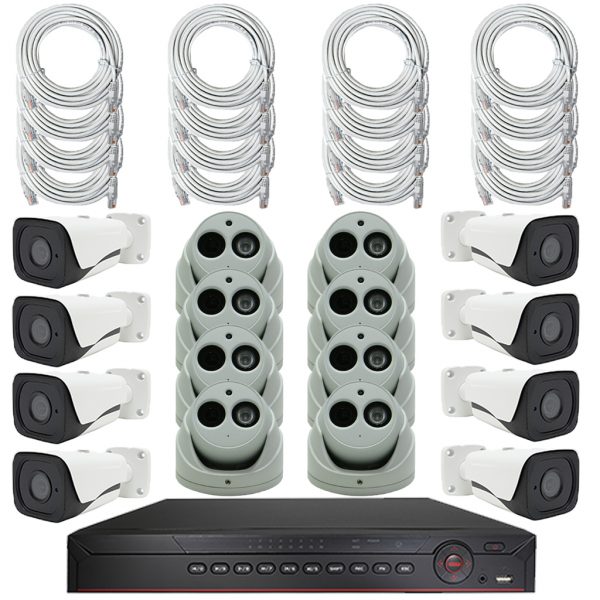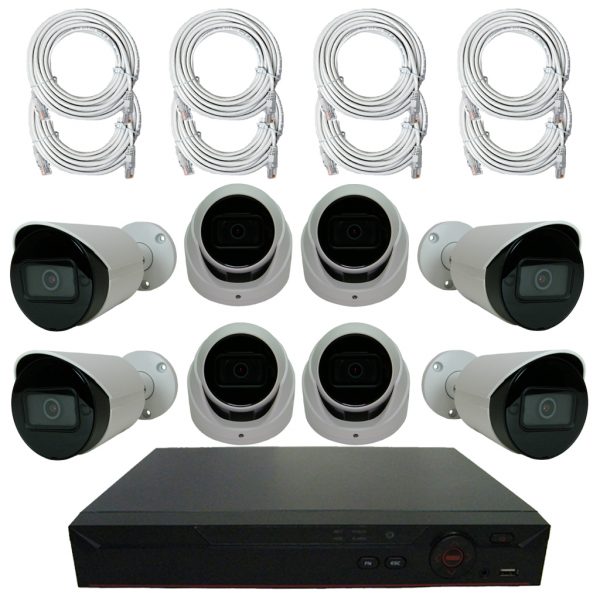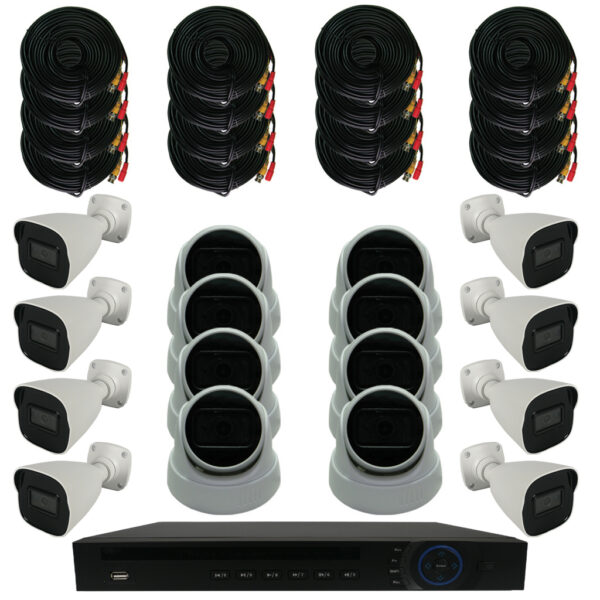Enterprise security camera systems are sophisticated surveillance solutions designed to meet the complex security needs of large organizations. These systems offer advanced features, seamless integration, and robust performance, making them ideal for safeguarding extensive facilities, sensitive data, and valuable assets. This article explores what enterprise security camera systems are, their benefits, and the different components involved.
What is an Enterprise Security Camera System?
An enterprise security camera system is a high-capacity surveillance solution designed to monitor and protect large-scale environments such as corporate campuses, industrial facilities, and government buildings. These systems incorporate a network of advanced cameras, video management software (VMS), and storage solutions to provide comprehensive security coverage.
How Enterprise Security Camera Systems are Useful
- Scalability and Flexibility:
- Enterprise security systems are designed to be scalable, allowing organizations to expand their surveillance coverage as needed. They can accommodate a large number of cameras and integrate with various security technologies.
- Advanced Features and Analytics:
- These systems come equipped with advanced features such as high-definition video, motion detection, facial recognition, license plate recognition, and video analytics. These capabilities enhance the system’s ability to detect, analyze, and respond to security threats.
- Centralized Management:
- Enterprise systems offer centralized management through video management software (VMS). This allows security personnel to monitor multiple locations from a single control center, streamlining operations and improving response times.
- Enhanced Security and Compliance:
- By providing real-time monitoring and recording, enterprise security systems help organizations comply with industry regulations and standards. They also ensure the safety of employees, visitors, and assets.
- Integration with Other Systems:
- These systems can integrate with other security measures, such as access control, alarms, and environmental monitoring. This integration creates a comprehensive security solution that enhances overall protection.
Components of Enterprise Security Camera Systems
- Cameras:
- High-Resolution Cameras: Capture detailed and clear footage, essential for identifying individuals and incidents.
- PTZ Cameras: Provide the ability to pan, tilt, and zoom, offering wide coverage and precise control.
- Thermal Cameras: Detect heat patterns and are useful for night-time surveillance and detecting hidden threats.
- Video Management Software (VMS):
- Centralized Control: Allows for the management and monitoring of multiple cameras from a single interface.
- Real-Time Alerts: Sends notifications to security personnel in case of suspicious activities or security breaches.
- Analytics and Reporting: Provides advanced analytics, such as motion detection and facial recognition, and generates detailed reports.
- Network Infrastructure:
- PoE Switches: Supply power and data through a single Ethernet cable, simplifying installation and reducing wiring costs.
- Routers and Access Points: Ensure robust and secure network connectivity for seamless data transmission.
- Storage Solutions:
- Network-Attached Storage (NAS): Provides scalable and centralized storage for recorded footage.
- Cloud Storage: Offers off-site storage options, ensuring data security and accessibility.
- Hybrid Storage: Combines local and cloud storage for redundancy and flexibility.
- Access Control Systems:
- Integrates with the camera system to control and monitor entry points, ensuring only authorized personnel can access sensitive areas.
Types of Enterprise Security Camera Systems
- IP Camera Systems:
- Overview: Utilize Internet Protocol for data transmission, offering high-resolution video and advanced features.
- Uses: Suitable for large organizations requiring detailed monitoring and remote access.
- Analog Camera Systems with Digital Video Recorders (DVRs):
- Overview: Traditional systems that use coaxial cables for data transmission and DVRs for recording.
- Uses: Ideal for organizations looking to upgrade existing analog systems without replacing all infrastructure.
- Hybrid Camera Systems:
- Overview: Combine IP and analog cameras, providing a cost-effective solution for transitioning to digital surveillance.
- Uses: Suitable for organizations with existing analog infrastructure looking to expand with IP technology.
- Wireless Camera Systems:
- Overview: Use Wi-Fi for data transmission, eliminating the need for extensive cabling.
- Uses: Ideal for temporary installations or areas where running cables is challenging.
Conclusion
Enterprise security camera systems provide comprehensive and scalable surveillance solutions designed to meet the complex needs of large organizations. With advanced features, centralized management, and seamless integration capabilities, these systems enhance security, compliance, and operational efficiency. Investing in high-quality enterprise security systems ensures the safety and protection of valuable assets, personnel, and sensitive information.
Related Products
16 Channel NVR with Eight 8MP Dome Cameras & Eight 8MP Bullet Cameras
Specifications
- Recorder: NVR-ELE16M-16P4KV2
- Number Of Cameras: 16
- Number Of Hard Drives: 2
- Size: 1U
- Resolutions Capable: 8MP / 6MP / 5MP / 4MP / 3MP / 1080P / 720P / D1 & etc.
8 Channel NVR with Four 4MP Dome Cameras & Four 4MP Bullet Cameras
Specifications
- Recorder: NVR-ELE8-PS
- Number Of Cameras: 8
- Number Of Hard Drives: 1
- Size: Mini 1U
- Resolutions Capable: 8MP / 6MP / 5MP / 4MP / 3MP / 1080P / 1.3MP / 720P
16 Channel DVR with Eight 8MP Dome Cameras & Eight 8MP Bullet Cameras
Specifications
- Recorder: PENDVR-ELE16M4K-AI
- Number Of Cameras: 16
- Number Of Hard Drives: 2
- Size: 1U
- Resolutions Capable: 4K, 6MP, 5MP, 4K-N, 4MP, 3MP, 4M-N, 1080P, 720P, 960H
Frequently Asked Questions (FAQ)
What are enterprise security camera systems?
- Enterprise security camera systems are comprehensive surveillance solutions designed for large-scale organizations. They provide advanced security features, high-resolution video, and centralized management to monitor and protect extensive areas such as corporate campuses, factories, and multi-site businesses.
What are the benefits of using enterprise security camera systems?
- Benefits include enhanced security and surveillance coverage, centralized monitoring and management, high-resolution video quality, scalability to accommodate growing security needs, integration with other security systems, and advanced analytics for proactive threat detection.
What features should I look for in an enterprise security camera system?
- Key features to consider include high-definition video resolution, network connectivity (Ethernet or Wi-Fi), advanced analytics (such as facial recognition, motion detection, and object tracking), remote access, weather resistance for outdoor cameras, and robust data encryption for security.
How do enterprise security camera systems differ from standard security camera systems?
- Enterprise systems offer greater scalability, more sophisticated features, and centralized management capabilities. They are designed to handle the security needs of large organizations, providing comprehensive surveillance coverage and the ability to monitor multiple locations from a single platform.
How can I ensure the security and reliability of my enterprise security camera system?
- To ensure security and reliability, use strong, unique passwords, enable encryption, regularly update the system’s firmware, restrict access to authorized personnel only, implement network security measures (like firewalls and VPNs), and conduct regular security audits.




